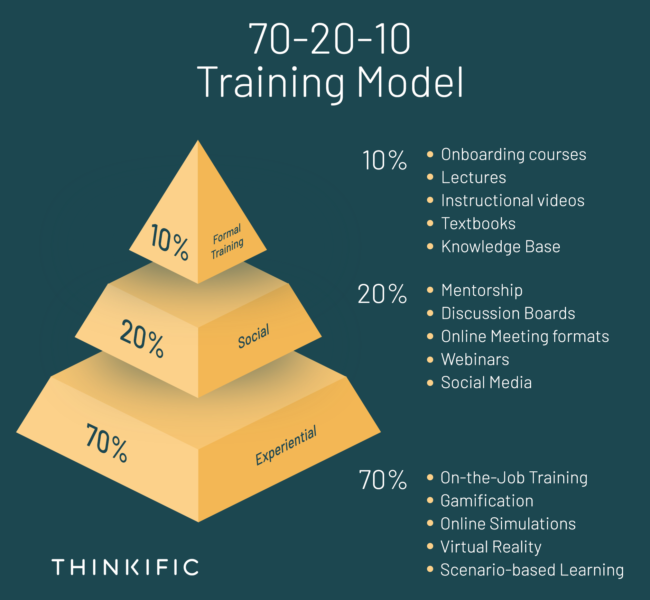While meticulous coding, a seamless platform, and soaring sales are all vital to a successful software-as-a-service (SaaS) business, there’s another equally critical component that often gets overlooked: customer support.
A robust SaaS support strategy ensures customers navigate your platform with confidence — like a lighthouse in a storm.
More than just a preventive measure against challenges, this strategy establishes a foundation of trust and fosters user loyalty. Exceptional customer support not only resolves issues but enhances every interaction, setting the stage for a resilient and flourishing SaaS enterprise.
Skip ahead:
- Understanding SaaS Support Strategy
- Building a Customer-Centric Support Infrastructure
- Designing Effective Support Processes
- Continuous Improvement and Feedback Loop
- Frequently Asked Questions
Understanding SaaS support strategy
At its core, your SaaS support strategy needs to be about more than just problem-solving; it’s about cultivating meaningful relationships with users by helping them succeed.
Diving deeper, your strategy should be a holistic system that proactively zeroes in on and efficiently addresses the myriad of concerns and challenges customers might face while interacting with your product. But it doesn’t stop there.
Your strategy should combine support techniques, established guidelines, and measurable metrics, all curated with one goal in mind: to deliver an uninterrupted, gratifying user experience. The hallmark of a resilient support strategy lies in its responsiveness, depth of knowledge, and unwavering commitment to customer delight.
You should also consider how your support strategy aligns with your broader business vision. This guarantees that while customer needs are consistently met, the strategy also plays a pivotal role in driving core business outcomes. From bolstering user retention rates to unlocking opportunities for upsells, a well-aligned support strategy can be a growth catalyst in its own right.
Building a customer-centric support infrastructure
Building a solid SaaS support infrastructure demands precision, foresight, and a steadfast dedication to the end user.
Choosing the right support channels:
The choice of support channels hinges heavily on understanding one’s user base. For instance, a SaaS product catering to a younger, tech-savvy demographic might find live chat or in-app messaging as the most engaged channels.
On the contrary, a platform serving corporate clients may prioritize email and phone support. According to a report by Zendesk, 92% of customers feel satisfied when using live chat, compared to 85% for emails and 88% for voice calls. Hence, determining the ideal mix based on user preferences and behavior can significantly boost user satisfaction.
Implementing self-service options:
In today’s fast-paced world, users prefer instant solutions. Incorporating self-help resources, like a knowledge base, well-structured FAQs, and vibrant community forums, can be a game-changer.
These platforms don’t just alleviate the support team’s burden but empower users to find solutions at their fingertips. A study by Forrester Research indicated that 76% of customers prefer self-service options due to their convenience and time efficiency.
Offering multi-channel support for seamless customer experience:
In the world of SaaS, consistency is king. Regardless of whether a user reaches out via email, live chat, or phone, their experience should be uniform and top-notch. Multi-channel support ensures no user feels left out, with each channel offering an equally stellar service.
Developing comprehensive user guides and manuals:
Succinct yet detailed user documentation can nip countless queries in the bud. Think of it as a user’s first line of defense against potential issues. For example, a cloud storage SaaS can greatly benefit from illustrative guides on topics like “Maximizing Storage Space” or “Securing Data.”
Building a knowledge base of FAQs and troubleshooting articles:
The most common queries are often the easiest to address preemptively. A continuously updated FAQ or troubleshooting guide is not just a resource – it’s a testament to a company’s commitment to seamless user experience. For instance, a SaaS providing CRM solutions can have FAQs on topics like “Integrating Third-party Tools” or “Optimizing Lead Management.”
Providing tutorials, video guides, and training materials:
In a world where YouTube is the second largest search engine, it’s evident that visual content resonates deeply. Especially for complicated processes or new features, video tutorials can be incredibly effective. A project management tool, for example, could provide video walkthroughs on “Setting up a New Project” or “Collaborating with Teams.”
Hiring and training customer support representatives:
A formidable support team begins with meticulous hiring. SaaS businesses must seek professionals who balance technical prowess with impeccable communication abilities. They are the front liners; the voice and face of your SaaS product to users.
Promoting product expertise and technical knowledge:
A support rep’s knowledge shouldn’t be static. As a SaaS product evolves, so should its support. Regular product training sessions ensure the team is perpetually prepared to address user queries, be they about legacy features or the latest update.
Implementing continuous training and skill development programs:
Beyond product-specific knowledge, the broader landscape of SaaS is in constant flux. Hence, periodic training on industry trends, emerging tech, and best practices are pivotal. This not only sharpens their skills but also fortifies the company’s position as an industry leader.
In essence, creating a customer-centric support infrastructure is a multifaceted endeavor, demanding equal parts innovation, empathy, and expertise. But with the right strategies and a committed team, SaaS businesses can elevate their support from merely functional to truly exceptional.
Designing effective support processes
Within SaaS, developing effective support processes is paramount. By ensuring each function operates cohesively, you can almost guarantee customer interactions are efficient, streamlined, and satisfactory.
Crafting these processes isn’t just about troubleshooting; it’s about creating an environment where every user feels valued, and every query is handled with precision and care.
A proficient ticketing system is crucial in the world of SaaS, given the high volume of user interactions and queries. Such systems help manage and categorize incoming concerns, ensuring that they’re addressed in an orderly and timely manner.
Prioritizing tickets is standard practice, as it ensures urgent and high-impact issues get swift attention. This isn’t just about efficiency but also about ensuring users feel valued and heard.
Meeting customer expectations in the digital age is more pressing than ever. A Salesforce report highlighted that 76% of customers think brands need to put more effort into providing consistent experiences. Setting and adhering to response and resolution timeframes is a critical aspect of this consistency, showing a brand’s commitment to its users.
Understanding the nature and urgency of support tickets is paramount. A service-wide outage should always be prioritized, for example. Addressing tickets promptly is crucial not just for functionality but also for retaining user trust and ensuring a seamless product experience.
Incorporating these best practices into your incident management and ticketing procedures can make a marked difference in both operational efficiency and customer satisfaction.
SLAs are the compass by which customer-service relationships are navigated. They shed light on what users can expect and set the bar for service standards. However, setting accurate SLAs is a fine balance.
A study by SuperOffice revealed that while the average response time for companies is 12 hours, most customers expect a response within one hour. This mismatch can erode trust if not managed with transparent and realistic SLAs.
Consistent monitoring of adherence to SLAs isn’t merely a procedural step. When any SaaS organization identifies that certain SLAs aren’t consistently met, a holistic approach is vital. Rather than just augmenting resources, it’s critical to delve deeper.
Retraining teams, refining processes, and understanding underlying causes are key components of this. Through such rigorous and comprehensive analysis, potential weaknesses can be identified and transformed into areas of strength and excellence.
Even the best first-line support can sometimes be stumped by intricate issues. Take Salesforce, for example. Given the platform’s vast and varied functionalities, some user concerns are multifaceted.
A well-defined escalation path ensures that such issues are passed on to specialists or teams with specific domain knowledge, ensuring quicker, more accurate resolutions.
Promoting cross-team collaboration is a hallmark of modern SaaS successes. Atlassian, known for tools like Jira and Confluence, champions this. Their teams, from support to engineering, frequently collaborate, pooling their collective expertise to address user challenges more holistically.
Each resolved issue is a treasure trove of insights. Fostering a culture of feedback and knowledge sharing ensures that every challenge overcome makes the entire team more adept. The resolution of one ticket might very well be the preventative measure for dozens more in the future.
Elite SaaS support isn’t about merely dousing fires — it’s about building fire-resistant infrastructures.
Through meticulous processes, relentless commitment to excellence, and a continuous learning ethos, companies can ensure that their support is more than just functional – it’s exemplary. With the right strategies in place, SaaS providers can turn support from a necessity into a competitive advantage.
Continuous improvement and feedback loop
The dynamism inherent in the SaaS domain demands an equally agile approach to customer support. Top-tier SaaS companies recognize that the landscape is in constant flux and evolve their support strategies based on invaluable feedback and data-driven insights.
Actively seeking feedback is crucial, but how it’s gathered can be just as pivotal. For example, platforms like Adobe, known for their suite of creative software, deploy post-support surveys.
However, surveys aren’t the only feedback avenue. Companies can encourage spontaneous feedback during or immediately after support interactions, realizing that the raw immediacy of feedback can unearth candid insights.
Collecting and utilizing customer feedback is the bedrock of continually improving support services. Here’s how businesses can effectively gather insights from their users:
- Deploying post-support surveys:
- Design brief, focused questionnaires to be presented immediately after customer interactions
- Questions should cover the quality of interaction, agent helpfulness, and solution effectiveness
- Use easy rating scales, such as a 1-5 scale, alongside open-ended questions for detailed insights
- Encouraging spontaneous feedback:
- Integrate feedback prompts into support emails, encouraging users to share thoughts at their convenience
- Train support agents to invite feedback at the conclusion of live chats or calls
- Implement in-app prompts or pop-ups following support interactions to gather immediate reflections
- Monitoring online channels:
- Use tools designed to track brand mentions across forums, review sites, and social media
- Create alerts for specific keywords related to your service or product
- Regularly review feedback from these channels, identifying recurring themes or areas of concern
Metrics, especially response and resolution times, provide quantifiable insights into the efficiency and efficacy of SaaS support teams. Companies pay meticulous attention to these metrics to ensure users aren’t left in the lurch.
A GetFeedback study revealed that a 10% increase in a company’s customer satisfaction score results in a 12% increase in trust from customers.
Then there’s the Customer Satisfaction Score (CSAT), a straightforward yet telling metric. 80% of customer service organizations use it as their primary customer experience metric.
Yet, not all insights are overt. By digging deep into data, businesses can spot trends, identifying recurring challenges even before they balloon into broader issues.
Data-driven decision-making remains crucial in refining support strategies:
- Tracking basic metrics:
- Monitor first response time and average resolution time. This directly indicates the efficiency of the support team.
- Compare these metrics against industry benchmarks to understand relative performance
- Evaluating CSAT scores:
- Integrate CSAT surveys after issue resolution
- Use scores to gauge overall customer sentiment after support interactions
- Analyze low scores to identify common threads or pain points in the support experience
- Deep data dives:
- Analyze patterns in ticket volumes during different times of the day, week, or month
- Categorize tickets to identify recurring problem areas
- Assess individual and team performance based on metrics and customer feedback to identify training needs or process gaps
Feedback, while invaluable, serves little purpose if not acted upon. Gainsight, the customer support platform, stands as a testament to this. When user feedback highlights certain usability issues, they don’t just acknowledge it; they loop it back into their support strategy, refining processes and ensuring those concerns are proactively addressed in the future.
The advent of automation tools has been a game-changer. Tools like Intercom or Drift allow businesses to automate routine support tasks, freeing up human agents for more nuanced, complex queries.
Salesforce’s Einstein AI is a sterling example of how automation, coupled with artificial intelligence, can revolutionize customer support, offering users swift, contextual resolutions.
Periodic strategy revisions are the hallmark of resilient, forward-thinking SaaS businesses. Companies like Spotify, rooted in a culture of continuous learning, frequently revisit their support strategies.
They don’t view them as static structures but as evolving blueprints, morphing and adapting based on tangible data, user feedback, and the ever-shifting SaaS landscape.
Feedback must be looped back into the system for actionable improvements:
- Incorporating feedback into strategy:
- Create a system to regularly review feedback and identify recurring themes or concerns
- Collaborate with different teams (development, product management) to address and prevent common issues highlighted by users
- Leveraging automation and AI:
- Implement automation tools for handling routine queries or tasks, allowing human agents to focus on complex issues
- Explore AI-driven support tools that can provide instant solutions while learning from each interaction to refine future responses
- Periodic strategy revisions:
- Schedule regular reviews of the support strategy, taking into account recent feedback, data, and industry best practices
- Adapt strategies based on changes like product updates, new feature releases, or shifts in user behavior and needs
While products might be the draw, it’s the post-purchase support that often defines user loyalty in the SaaS domain. By actively seeking feedback, analyzing data with discernment, and constantly refining support strategies, SaaS businesses can not just retain users but turn them into brand evangelists.
Your customers need your support
Peeling back the layers of a thriving SaaS venture often reveals a robust support strategy at its core. This foundation isn’t built overnight but is meticulously constructed through a blend of design, feedback, and continuous improvement.
At the heart of this endeavor lies the SaaS support strategy, which isn’t merely a tool but the very foundation on which customer satisfaction rests. It determines how businesses interact with their users, address their concerns, and constantly evolve to meet their needs. Crafting a strategy tailored to both business objectives and customer needs is paramount.
Your SaaS offering’s brilliance isn’t just determined by its features but by the continuous support and enhancements you provide.
Ready to Elevate Your SaaS Support Strategy? 🚀
Discover the synergy between SaaS support and customer education with Thinkific Plus. 🔧
Introducing Thinkific Plus—a powerful platform that enables you to effortlessly create, manage, and deliver customer education courses. 🌟
Educate your users on best practices, new features, and advanced techniques, right from your own branded portal.
Imagine reducing support tickets and boosting user satisfaction through proactive, empowered learning!
Learn more about Thinkific Plus.
Frequently asked questions
Q: What is a SaaS support strategy?
A SaaS (Software as a Service) support strategy is a comprehensive plan that outlines how a SaaS company will provide assistance and solutions to its users. This strategy encompasses various components like communication channels, documentation, support team training, incident management, and continuous improvement processes. Its primary goal is to enhance the user experience, ensuring that customers can maximize the product’s value while facing minimal issues.
Q: Why is a SaaS support strategy important for SaaS businesses?
For SaaS businesses, a support strategy is vital for several reasons. First, it ensures that users have a seamless experience, minimizing disruptions and maximizing product utility. Second, an effective support strategy fosters customer loyalty, leading to higher retention rates. Lastly, it offers businesses insights into user needs and potential product improvements, allowing for continuous product and service refinement.
Q: How can I build an effective SaaS support infrastructure?
Building an effective support infrastructure requires a multi-pronged approach. Begin by choosing the right communication channels that cater to your user base, whether it’s live chat, email, or phone support. Implement self-service options like a comprehensive knowledge base, FAQs, and tutorials. Assemble and train a knowledgeable support team, ensuring they have both technical expertise and soft skills. Lastly, put in place robust processes for incident management, ticketing, and feedback collection to ensure continuous improvement.
Q: What are some key components of a successful SaaS support plan?
A successful SaaS support plan comprises several key components:
- Support channels: Tailored communication mediums like live chat, email, and phone.
- Documentation: Comprehensive resources, including user manuals, FAQs, and video guides.
- Support team: Well-trained, knowledgeable representatives with continuous skill development programs.
- Processes: Efficient incident management systems, clear escalation paths, and well-defined service level agreements.
- Continuous improvement: Mechanisms to gather user feedback, analyze support metrics, and regularly refine strategies based on insights.
Q: How can I measure the effectiveness of my SaaS support strategy?
Effectiveness can be gauged through a combination of qualitative and quantitative metrics. Monitor key performance indicators like response time, resolution time, and customer satisfaction scores (CSAT). Also, regularly implement customer satisfaction surveys and closely observe feedback from support interactions. Track trends in support tickets to identify recurring issues and areas for product improvement. By continuously analyzing these metrics, you can ensure your support strategy is not only effective but also constantly evolving to better serve your users.






